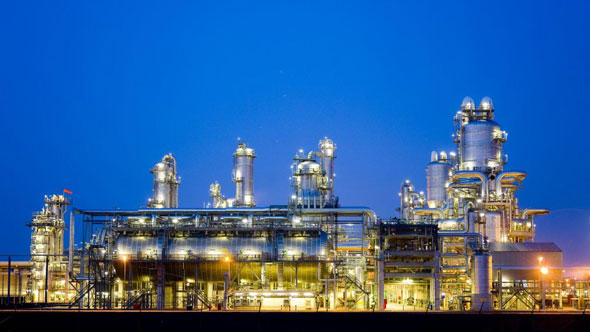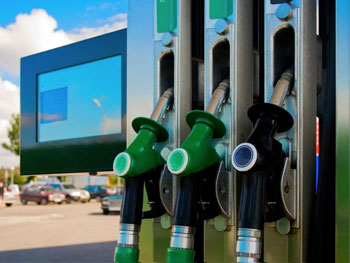Special Report: Oil and Gas Sector in Kuwait
Although there is a lot of talk about planning for the “time after oil,” the “black gold”, along with gas, remains the primary source of income for the Kuwaiti government.

Although there is a lot of talk about planning for the “time after oil,” the “black gold”, along with gas, remains the primary source of income for the Kuwaiti government.
Especially in the fields of gas exploration and environmental protection we see more potential. We want to produce clean energy. That is our challenge and our dream.
The northern Gulf state’s estimated proven oil reserve stands at 104 billion barrels. With this amount, OPEC member state Kuwait harbors some 8% of world’s oil reserves, which ranks it 4th among oil producing countries, a notch above the United Arab Emirates which has 7% of the global reserves.
“Our long-term goal is really to be secure supplier of oil,” said Farouk Hussein Al-Zanki, Deputy Chairman of the Board of Directors and Chief Executive of the Kuwait Petroleum Corporation (KPC), in a video interview with Marcopolis. KPC is the state-owned entity responsible for Kuwait’s hydrocarbon interests throughout the world.
The bulk of Kuwait’s oil is located in the Burgan field, south of the capital Kuwait City. Ninety-five percent of the government’s fiscal budget comes from oil revenue. The dominance of the energy industry overwhelms nearly all other segments.
Kuwait is in the comfortable situation of dealing with a low fiscal break-even price in oil at US $44 per barrel, according to data compiled by the International Monetary Fund (IMF). In comparison, Saudi Arabia’s fiscal break-even level is much higher, at US $72 per barrel.
“For gas, it is almost the same, except that in the United States, gas production is already increasing through oil shale discoveries and production,” said Walid K. Al-Hashash, Chairman of energy investment firm AREF Energy. “The supplies are immense and accordingly, the prices are going down. Overall, I do not expect 2012-2013 to be much different from 2011. The price will remain around 100-110, more or less.”
Nevertheless, the oil and gas industries are very capital-intensive ones. This requires local exposure and foreign direct investment. Al-Hashash agrees that the investment climate needs improvement. “The oil and gas sector of Kuwait is very closed. We might be the hardest market to penetrate. Despite this, you have a lot of contacts, so there are many ways to go about it. Usually, it is either done through JV or agencies, through arrangements with oil companies. The only thing is that right now, only oil and gas services are available: tenders, contractors.”
Despite all the heated discussions in parliament, Al-Hashash does not see light on the horizon—as yet: “To be honest, I do not see any signals that the foreign investment environment will be encouraging in Kuwait. There haven’t been any changes, from what I can see right now,” he said. “Things are the same. If we look at a ranking of countries in terms of attracting foreign investment, Kuwait will be in one of the bottom spots.”
While the production of oil nowadays hovers around 3,1 million barrels per day, Kuwait is aiming for a growth in production to 4 million barrels per day by 2020 and sustain it until 2030.
What to do? Al-Hashah said that it is up to the government to improve the business climate. “It will all depend on the government’s seriousness to make a difference.” According to a survey done by Marcopolis, a majority of interview partners of this Kuwait Report do not expect that the newly elected government will steer the country to an improved level.
Another challenge which all oil states face is a lack of talent. It does not make a dinner chat to talk about working in the upstream or downstream oil industry. Office job have become more attractive than careers on oil-rigs. Nevertheless, according to Farouk Al-Zanki, CEO of KPC, many more opportunities are coming up for young graduates. “Especially in the fields of gas exploration and environmental protection we see more potential. We want to produce clean energy. That is our challenge and our dream.”
Corporate Social Responsibility is also high on the agenda. KPC supports the Bayt Abdullah Children’s Hospice, a clinic which aims to be a “home away from home” for children with life-limiting and life-threatening conditions.
While the production of oil nowadays hovers around 3,1 million barrels per day, Kuwait is aiming for further growth in production – up to 4 million barrels per day by 2020 and sustain it until 2030. It is an ambitious but official target that would require the development of complicated fields near the northern border of Kuwait. This will translate into more investments and special opportunities for companies with heavy oil extraction know-how.

According to the report by Netherlands’ Embassy, “the growth needs to be achieved by upgrading existing facilities as well as developing new facilities; a development which is scheduled to cost around $US 80 billion. Most of the investments will be in upstream activities with a scheduled expenditure of over $US 55 billion. Downstream projects are scheduled to cost around $US 25 billion. Finally, there are also plans to increase the production in Kuwait’s northern fields from 600.000 barrels per day to 900.000 barrels per day.”
The report further outlines major project that offers business opportunities for foreign companies: “as for downstream development project, the $18 billion Clean Fuels Project is among the largest downstream investments in Kuwait. The project covers modernisation and upgrade of the two refineries through three main EPC packages. One package covers the process units at Mina Abdullah. The other involves process and revamp work, as well as off site facilities and utilities, at Mina Abdullah and Kuwait’s third refinery at Shuaiba, in advance of its planned decommissioning. The final package covers all facilities and services at Mina al Ahmadi.” There is also a plan for 4th refinery that is to produce “615.000 bpd refinery at Al-Zour in the south of Kuwait; the new refinery would raise the daily output of Kuwait to around 1,6 million bpd.”
Another business bonanza is the development of gas fields in Kuwait. Due to Kuwait’s alarming rate of energy consumption coupled with global demand for this resource, that KPC “expects to grow almost 300% in the coming 20 years, compared to 25% growth in oil demand”, major projects are in the pipeline and they require advanced technology.
Lastly, major downstream projects include heavy crude oil extraction in the divided zone, development of Khafji and Dorra field and Iraqi invasion cleanup project.